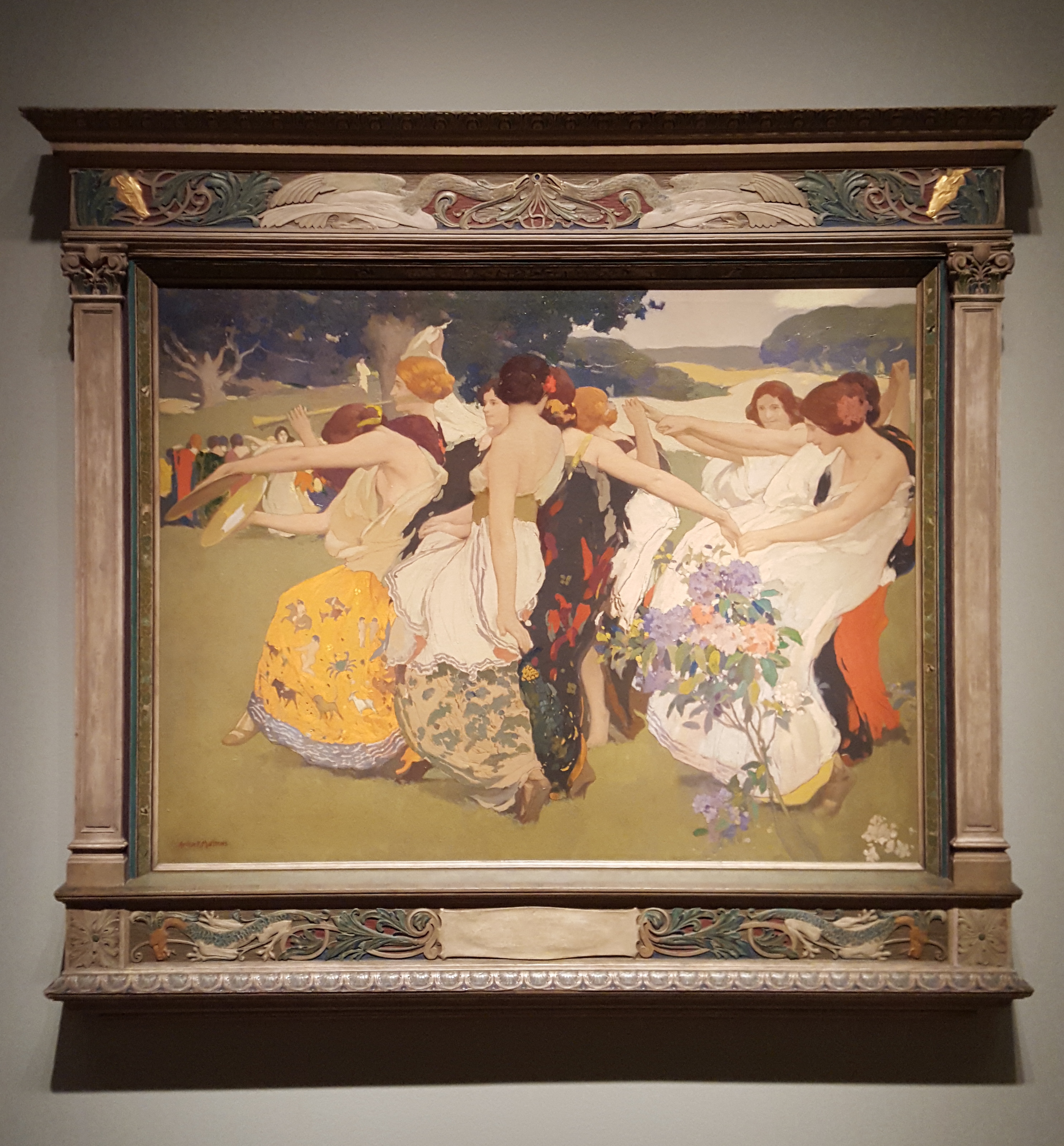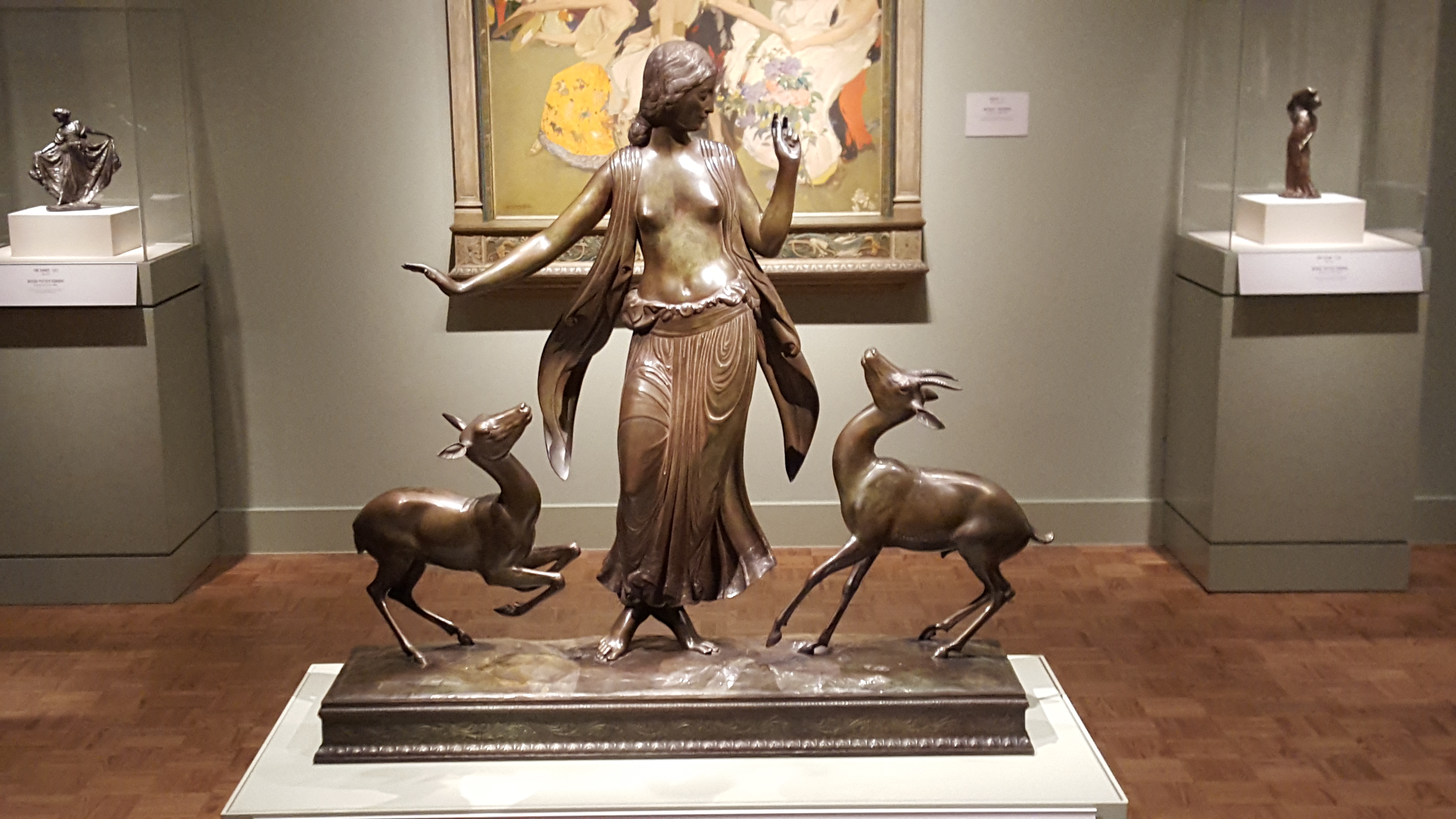DIA Offers the Chance to Explore American Dancing

The Detroit Institute of Arts is offering an exhibition called “Dance! American Art 1830-1960.” The DIA opened this display on March 20 and it will run until June 12. The museum is presenting 90 works from various artists on 19th and 20th century dance. Among these artists included well-known names: Andy Warhol, Diego Rivera, and Max Weber to name a few. Projectors hang from the wall in each room and show something traditional paintings and pictures are unable to capture: the fluidity, coordination, and preparation involved with dance movements. By presenting patrons with videos of ballet, Native American tribal dancing, and pictures of people dancing in the streets of Harlem, the exhibit provides an immersion through the fusion of dramatically different dances, cultures, imagery and ideas.
Bull Dance by George Catlin was painted in 1832. It depicts a Native American Mandan Bull Dance in the hills of North Dakota. The dance is both spiritual and animalistic as the Indians mimic the movements of a bison while dressed as such. Others dance around and kick up dirt, or wave their hands from the top of hills. The dance is chaotic in nature but is deliberately and acutely centered on the bison, which act as an eye to the storm, maintaining an order of sorts. This piece, as most do, contrasts greatly with other artwork in the museum.
Rustic Dance After a Sleigh Ride is close in proximity to the aforementioned painting. It was made in 1830 by William Sydney Mount and it juxtaposes with Catlin’s painting by showing another culture’s version of dancing in the same American era. Loin cloths and shiny skin have been replaced with neatly hemmed clothing, pale skin and top hats. The dance is more formalized; hands and feet are used strategically in coordination with partners.
Not all is different, though, as both dances hold cultural significance in their respective communities. The Bull Dance was more spiritual whereas this one appears to be a formality in avant-garde culture. However, both dances were used in effect to bring communities closer together through ritual.
In a different take on dancing, The Bear Dance by William Holden Beard portrays bears as humans; one plays the trumpet with percussionists behind him, others huddle around a picnic table, and some stand and watch as the others dance. The bears are in a clearing in the woods with well-trodden grounds; the grass is stamped down where they dance, both rock and dirt make themselves known upon the backdrop of thick woods behind the bears. This painting reminds the audience that there is a fluidity to nature, though it may not be akin to what people are used to. Birds migrate and bears hibernate, different animals have different rituals and patterns, just as people dance in different patterns and formations. Though the bears aren’t anthropomorphized, it is still striking for museum goers to see such a dramatically different take on dance and the animal kingdom.
As patrons enter the 20th century in the exhibit, the dances become more familiar. Paintings from the 1940s hearken back to a scene straight from a Humphrey Bogart film, just as the paintings of ballet dancers show the foundations of the cultural significance of such dances in America.
The ballerinas are thin and nimble in every painting while others show raucous and romping crowds in swing clubs in the 1940s American night club scene.
The commonality in every painting at this exhibit is a cultural rhythm deeply embedded into America, as dance has played a vital role in understanding different eras, cultures, and even spiritualities.

